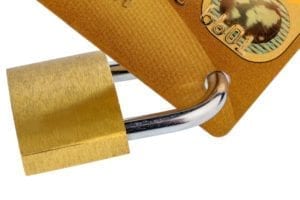Garnishing In Alberta
Garnishment is the process of collecting on a debt after the courts award it. This is a form of post judgment debt collection where the courts involve a third party to pay the debtors loan. The Calgary, Alberta based lawyers of Kahane Law Office will help with collections in Alberta. Call for help 403-225-8810.
What is Garnishment?
If a judgment debtor or a judgment creditor is not prepared to negotiate, then you will have to utilize more formal enforcement steps. Enforcement means executing or collecting what is owing to you based on a court order. One of these mechanisms is garnishment. Simply put, “garnishment” is a process where money owing to the judgment debtor is taken and distributed to the judgment creditors to satisfy the judgment debt(s) in whole or in part. In essence, if a judgment debtor is refusing to pay or is unable to pay their debt, garnishment allows the judgment creditor, to intercept money going to the debtor from a third party, known as the garnishee.
Procedure for Garnishment
As with Seizure, in order to take advantage of this process, you will first have to register a Writ of Enforcement with the Personal Property Registry (the “PPR” ). Kahane Law Office can ensure the registration of your Writ of Enforcement. This can also be done at most registry offices in Alberta, once your judgment is registered with the Court of Queen’s Bench of Alberta (however, registration with the Court of Queen’s Bench is only necessary if your judgment is from the Provincial Court of Alberta).
Once you file the Writ of Enforcement, a court clerk will issue a document called the Garnishee Summons. This document will detail the amount of all writs and any other amounts specified in an attachment order. This can include any future obligations owing by the Garnishee to the judgement debtor, such as employment earnings, deposit accounts and money owing from other sources.
Types of Garnishment
Any person or company that owes the judgment debtor money can receive a Garnishee summons. There are two garnishee summons which courts issue more frequently. They are:
Employment Garnishees
Common Garnishees include the judgment debtor’s employer. This type of garnishee summons is good for one year. This type of garnishment must be renewed every two years. It can be renewed indefinitely. This process forces the employer to pay a calculated amount of the judgment debtors income to directly pay down the debt. Garnishment has some limitations imposed with respect to what can be garnished. For example, a portion of a judgment debtor’s employment earnings is exempt from garnishment.
Employment earnings that may be exempt from garnishment can be varied by the court. The court will consider the following:
- The family responsibilities of the judgement debtor;
- The personal circumstances of the judgement debtor;
- The earnings accumulated by the judgement debtor’s spouse and dependents; and
- The behaviour of the judgement debtor in carrying out their finances.
A judgement creditor will usually take other steps and provide other opportunities to clear the loan before attempting to garnish wages. Some actions that judgement creditors can take are:
- Sue the judgement debtor for the amount outstanding and any needed fees and interests.
- Seize the item that they provided the loan for, such as your home or your car.
- Send a demand letter.
- Send the judgement debtor’s account to a collection’s agency.
- File an application with the courts to get a judgment for payment.
- Stop certain services to the judgement debtor’s home, such as utilities or cell phone service.
- Garnish the judgement debtor’s bank account.
Financial Institution Garnishees
The other common garnishee is serving the debtor’s bank. Unlike other garnishee summons, a garnishee summons that the court serves on a bank is only good for 60 days. One can also renew these garnishee summons. These summons also force the bank to pay any amount that the debtor has in his or her account to pay down the debt. Unlike employment garnishees, there is no limit on how much money a bank account can garnish. The judgement creditor is able to take all the money in the bank account, up to the amount of credit owing to them. If a judgment debtor changes banks to avoid this form of garnishment, then the new bank will need to be further served. If the bank is not known, then multiple banks can be served with this notice of garnishment to ensure that funds are located.
Banks also have the right to offset. This means that banks have the ability to use your checking account to pay themselves back. Further, they can do this without notifying you that they will be doing so. Only banks, credit unions and the Canada Revenue Agency have the right to garnishment without a court order.
How are Garnishment Funds Received
Once served on a Garnishee, any non-exempt funds subject to the summons are paid to the Court of Queen’s Bench of Alberta. The court then distributes to the judgment creditors similar to how one distributes funds on a seizure.
Hiring Alberta Lawyers for Garnishment
When collecting judgment debts, it is important to follow the correct protocols to avoid problems. Our lawyers will take the necessary steps required for garnishment related matters. We are able to act for the sole purpose of garnishing wages or accounts or as part of a great picture of collection of secured or unsecured debts. Call today so that we can help you with your debt collections legal needs. You can reach us toll-free at 1-877-225-8817, or 403-225-8810 locally or email us directly here.

